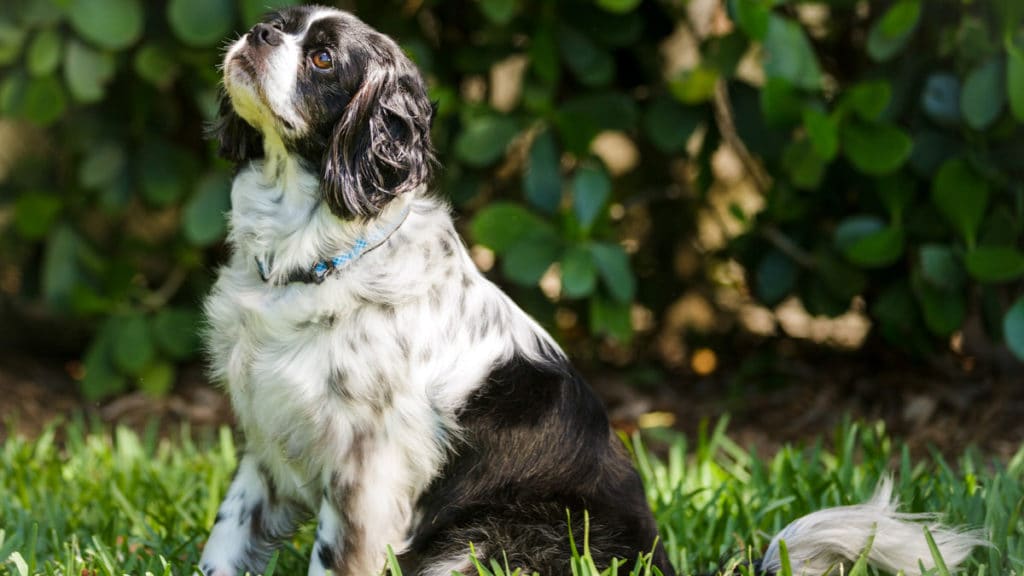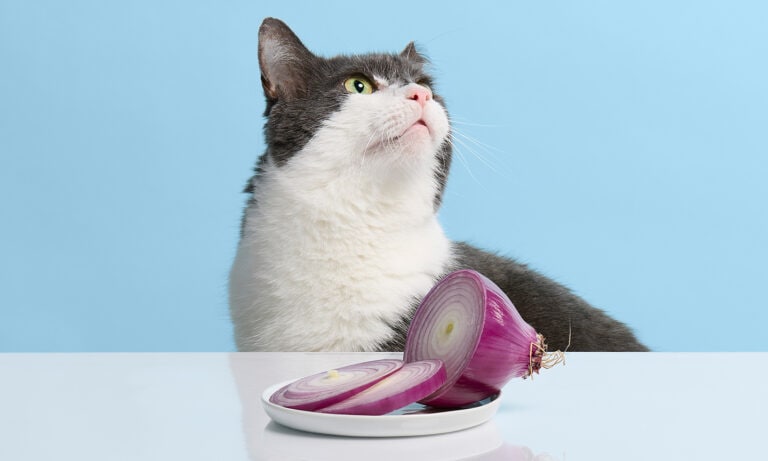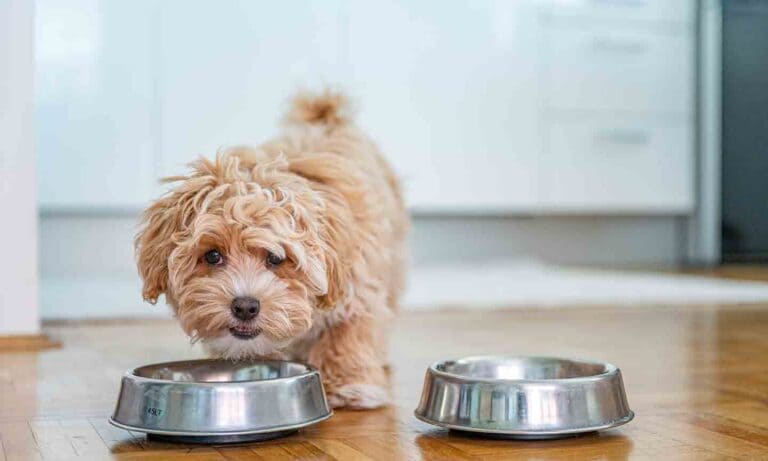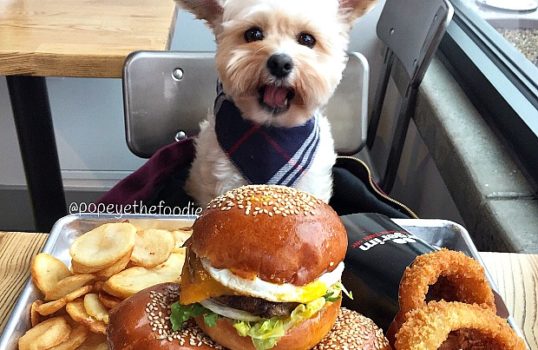Contributed by Dr. Alison Birken, owner and DVM of Victoria Park Animal Hospital.
The summer is finally here! Get those bathing suits out, get the sunblock ready, and dust off the barbecue grill. Everyone loves the summertime, especially our pets; the fresh warm air, the open fields of grass to run on, the swimming and splashing, and of course all the fun “people food” that is common during summer months. However, some of our favorite summertime BBQ foods are dangerous foods for dogs to eat. While some “people food” is safe to share with your pet—in moderation— others can be toxic for our pets. As a small animal veterinarian, I see an influx of food toxicities and upset bellies during the summer months. So before cookout season gets into full swing, lets talk about some common dangerous foods for dogs to keep out of reach or off the menu.
Raw Patties and Meat for the Grill
Raw meat and raw eggs can contain bacteria such as salmonella and E. coli that can be harmful to pets and humans. Some people love to line up extra patties and meat next to the grill, so that the next batch is ready to go when you need it. But, it won’t take long for your dog to catch a whiff–and he’ll be ready to pounce and grab a bite when you least expect it.
Meat Bones
Pets can choke on bones or sustain injury if the bone splinter becomes lodged in, or punctures, their digestive tract. BBQ basics like ribs and chicken wings are dangerous foods for dogs to get their paws on—before and after they’ve been enjoyed by you and your guests. Be sure meat bones are disposed of in a garbage with a lid that is out of your pet’s reach.
Burger Fixings
Who knew that dangerous foods for dogs at your BBQ could also include ingredients that are commonly used in preparing burgers, salads and side dishes, like garlic, onions and chives. Cats are more susceptible to the toxic effects of onions, garlic and chives; however, dogs are also at risk. The toxicity causes a condition called hemolytic anemia, which is characterized by the bursting of red blood cells circulating throughout your pet’s body. Ingestion can also cause less critical side effects such as gastrointestinal irritation. Toxicity is normally diagnosed through history, clinical signs and microscopic evaluation of red blood cells.
Snack Bowls
Pretzels and potato chips are in abundance during the summertime. Large amounts of salt can produce excessive thirst and urination, or even sodium-ion poisoning in pets. Salt toxicity clinical signs include vomiting, diarrhea, depression, tremors, elevated body temperature, seizures and even death. Please avoid giving your pets foods that are high in salts such as potato chips or pretzels. Even better, make sure there’s no way your fur babies have access to your snack spread (no open bags left on the table, etc.).
Alcohol
This seems obvious, but you would be surprised how many times I have seen emergency situations with alcohol intoxication. Most cases are accidents, clinical signs include vomiting, diarrhea, decreased coordination, central nervous system depression, difficulty breathing, tremors, abnormal blood acidity, coma and even death. If your pet has ingested alcohol, see or contact your veterinarian immediately.
Fruit Platters
Now, don’t get worried! In small doses, some fruits are perfectly safe for your pets to eat—including blueberries, apples and bananas. Citrus fruits are not likely to cause major problems beyond a minor stomachache. Citric acid contained in the stems, leaves, peels, fruit and seeds of plants can cause irritation and po ssibly even central nervous system depression if ingested in large amounts. So keep your pet’s citrus intake to a minimum. And keep your table free of grapes and raisins, as these fruits can cause kidney failure in dogs.
The Dessert Table
Nothing is cuter than sitting by the pool with your ice cream cone while your pup licks the drippings. But no matter how cute it might be, please be cautious over the summer with dairy and milk. Despite what many people believe, pets do not digest dairy products well. Chocolate desserts are another form of dangerous food for dogs, as it contains two ingredients that are toxic in large quantities: theobromide and caffeine. Clinical signs of chocolate toxicity include diarrhea or vomiting from the high fat content in the chocolate, restlessness, hyperactivity, muscle twitching, tremors, increased drinking and urination, excessive panting, irritability, increased heart rate, and abnormal heart rhythm. Although not as common, many people bake cookies and desserts with macadamia nuts. Weakness, depression, vomiting, tremors and hyperthermia are common clinical signs associated with macadamia nut ingestion in dogs. Signs usually appear within 12 hours of ingestion and can last approximately 12 to 48 hours. Other nuts including almonds, pecans and walnuts, contain high amounts of oils and fats. Foods that are high in oils and fats can cause vomiting and diarrhea, and potentially pancreatitis in pets. Dogs and cats do not have significant amounts of lactase, the enzyme that breaks down lactose in milk.
Summer is pretty exciting, with all the amazing time spent with family and friends enjoying fun in sun, and time spent with our furry friends. Unfortunately, this is a time of year that I see many pet emergencies from toxicities linked to dangerous foods for dogs, especially during a BBQ or summer party. I always encourage pet parents to ask your guests to refrain from feeding your pets “people food” during parties, or keep them on a leash so you can keep a close eye on them to avoid accidental ingestion. If you have any questions or concerns, you should always visit or call your veterinarian. They are your best resource to ensure the health and well-being of your pets.

Share:









